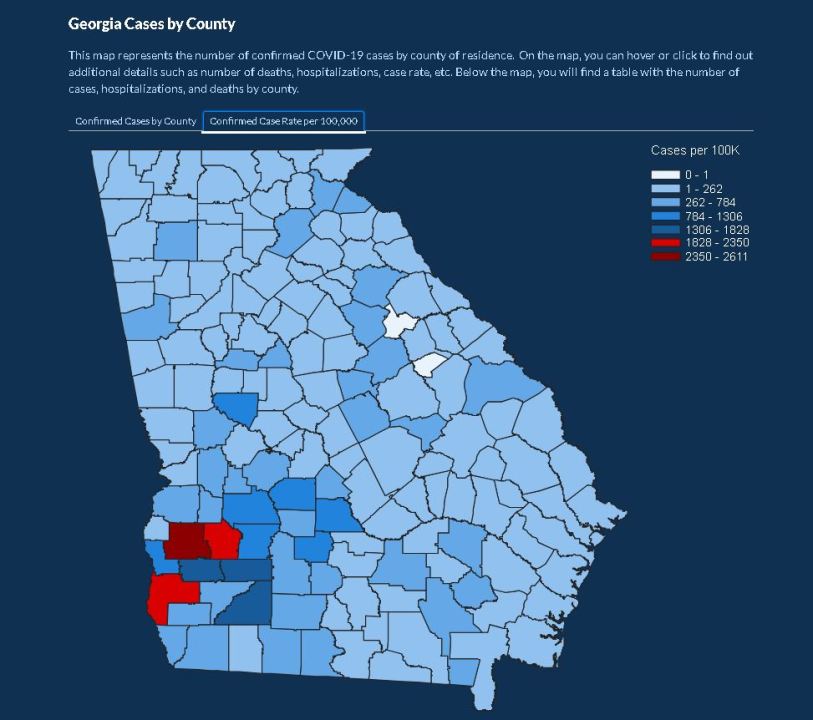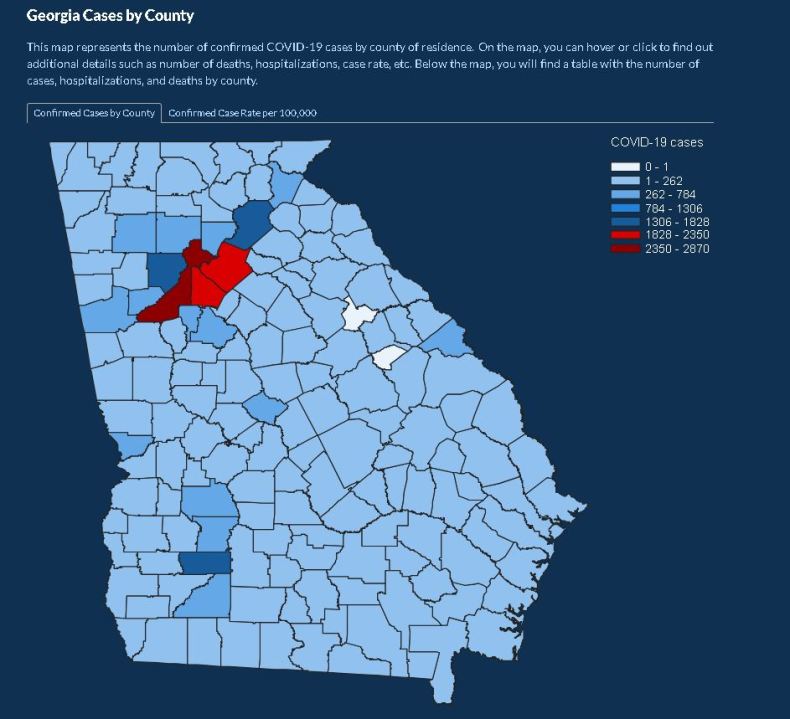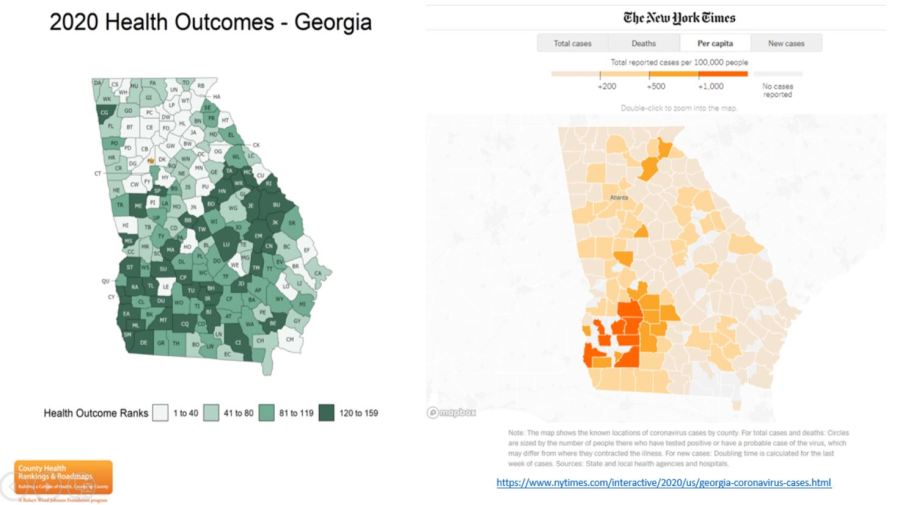Some Georgia counties that already struggled with poor health rates are being hit the hardest by COVID-19. The areas that previously had high rates of things like diabetes, heart disease and high blood pressure are the same areas with high rates of Coronavirus.
NewsChannel 6’s Ashley Osborne spoke to healthcare experts about how areas with high disease rates and low access to healthcare have been impacted by the pandemic.


The map to the left shows Fulton County has the highest number of Coronavirus cases; however, Augusta University Health Chief Medical Officer Dr. Phillip Coule says total number is not always the best indicator of greatest impact since you would expect the most populated county to have the most cases.
“Atlanta lights up [in the map on the left] as being the biggest issue because of the total number of cases, but when you adjust that per 100,000 people, suddenly Atlanta turns all nice and blue and the real issue and the real problem is down in Southwest Georgia,” Dr. Coule explains.
Some of the same parts of the state that are now hotspots for COVID-19 were already hotspots for other diseases.
“I was on a conference call with the Dean of the Medical College of Georgia and he had a pre-existing map about health ratings in Georgia in terms of overall health and if you overlay the heat map for COVID-19, with that map, it almost matches exactly,” Dr. Coule Explains.

The heat map on the left shows health outcome rates from before COVID-19. The heat map on the right shows the total reported COVID-19 cases per 100,000 people. These maps show how some of the areas with the highest concentrations of poor health, now have the highest concentrations of Coronavirus cases.
Those same counties have less access to healthcare, which further exacerbates the problem. On the bright side, there have been huge strides in telemedicine during the pandemic. Dr. Matt Lyon thinks those advancements will have a positive impact on rural healthcare in the future.
“We’re going to see disparities between rural and urban areas start to decline because of the ubiquitous nature of telemedicine and telemedicine products,” Dr. Lyon predicts.
The graph below shows the race and sex breakdown of people affected by Coronavirus.

“This disease appears to disproportionately impact our black and African American population,” Dr. Coule points out.
Dr. Joseph Hobbs says there is a health and economic explanation for why African Americans are impacted by COVID-19 at higher rates.
“There is already, and we know this, a health disparity that exists there,” Dr. Hobbs explains. “They have jobs that don’t pay as much as the general population and in fact those jobs are often essential jobs in service areas.”
Healthcare experts say the COVID-19 pandemic shined an ever brighter spotlight on the need for more doctors in rural areas.
Photojournalist Gary Hipps










